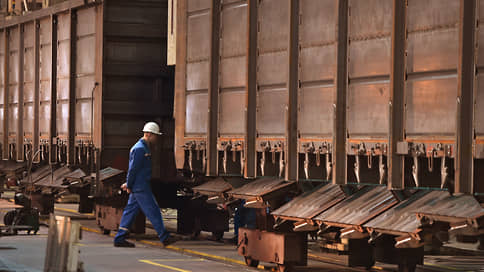Growth in wagon output is constrained by prices and state defense orders
[ad_1]

In the first half of the year, car builders increased production by 14.5% to 28.5 thousand units. According to experts, the increase was mainly due to UWC’s Tikhvin Freight Car Building Plant, which recovered volumes after a downtime last summer. However, in the most massive segment – gondola cars – output decreased by almost a third, which is due to the lack of capacity at Uralvagonzavod, which focused on the execution of the state defense order, as well as an increase in selling prices. The largest surge due to the increase in demand for transportation is observed in the segment of grain hoppers.
According to the IPEM monitoring data, in the first half of the year the output of railcars amounted to 28.49 thousand, which is 14.5% more than a year earlier. At the same time, if in the first quarter, according to Rosstat, the dynamics was negative (13.1 thousand cars, or minus 15.1% compared to the first quarter of 2022), then in the second there was a sharp jump in production – by 63%, to 15 .4 thousand units.
The head of Infoline-Analytics, Mikhail Burmistrov, notes that almost all of the growth came from UWC’s Tikhvin Freight Car Building Plant (TVSZ), which was idle last year due to a shortage of cassette bearings and reached its planned production volumes only at the beginning of this year.
For half a year, according to IPEM, the volume of production of covered wagons increased eightfold (1960 wagons), hopper cars – 2.6 times (3420 wagons), bunker-type wagons – 2.5 times (5110 wagons), tanks – 2, 1 time (3898 wagons). The production of gondola cars was reduced by 31% and platforms by 21%.
“The multiple increase in the volume of purchases by types of wagons is associated with an increase in traffic volumes, the turnover of wagons, the need to renew the fleet and ensure the export of goods with a guaranteed loading resource,” explained IPEM. buying the park.”
At the same time, Vladimir Savchuk, Deputy General Director of IPEM, specified that the multiple growth in the production of covered wagons is not due to an increase in demand for transportation in the corresponding rolling stock, but reflects the need to replace the fleet – 1.8 thousand covered wagons were decommissioned in the first half of the year.
As for the decline in the most massive segment of the fleet – gondola cars, it, according to Mr. Savchuk, was caused by a decrease in the production capabilities of domestic enterprises and an increase in prices for new orders.
Sergei ShoiguMinister of Defense of the Russian Federation, July 11:
“Uralvagonzavod has increased the supply and overhaul of T-72 and T-90 tanks by 3.6 times.”
Mikhail Burmistrov notes that the main drop in the production of gondola cars in the first half of the year (by 2.5 thousand pieces in annual terms) fell on Uralvagonzavod (UVZ), which was forced to transfer labor resources to fulfill the state defense order. The production of the Ruzaevsky Chemical Engineering Plant (RM Rail), which switched to the production of more marginal types of rolling stock (tanks and hoppers), decreased by 1.3 thousand units, and Altaivagon decreased by 1 thousand.
The offer of innovative gondola cars (with increased carrying capacity), the expert adds, is now limited, the price for them has risen sharply, and standard gondola cars, despite the price of 1 million rubles. smaller, less attractive due to technical characteristics and service life (22 years instead of 32 years for innovation). Demand for gondola cars remains, he says, and now buyers have confidence that the fleet will be in demand until 2029, when the deadline for mass write-offs comes (27,000 per year in 2029-2031 and 65,000 — in 2032–2034).
An important factor in curbing demand, notes Mr. Burmistrov, is the price, which has risen sharply in 2023: now an innovative gondola car costs 5.1-5.3 million rubles. excluding VAT, while back in 2020 some large buyers could purchase it for 2.7-2.8 million rubles.
The number of new cars registered on the Russian Railways network (manufactured in the Russian Federation, Kazakhstan and Belarus and re-registered from other railway administrations), specified in IPEM, exceeded the actual production of cars in Russia by 17.5%, or 5 thousand units: “Thus , Russian companies covered their needs in the new fleet not only with new products from Russian factories, but also with foreign manufacturers and re-registration.
Now the biggest problem on the market is grain hoppers, says Mikhail Burmistrov: there is nowhere to get them. “There is practically no seasonal pause in grain transportation for export,” says Mr. Burmistrov. , as not packed even in the Far East, stimulates unprecedented demand.” It remains, despite the fact that the main manufacturers of grain carriers – TVSZ, RM Rail, the Metalwork Plant in Engels, the Barnaul Plant – have sharply increased the production of hoppers.
[ad_2]
Source link





